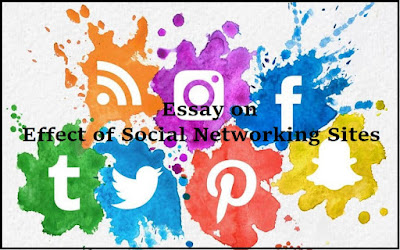The digital revolution has changed how we connect, communicate, and exchange information in the twenty-first century. Social networking sites (SNS) have become important platforms for connecting people and disseminating information on a worldwide basis. These platforms provide a wide range of advantages, but they can have negative social, psychological, and cultural repercussions. This article examines the many effects of social networking sites on people and society, highlighting both the advantages and disadvantages.
Positive Effects:
Global Connectivity: SNS offer a way for people to connect with friends, family, and acquaintances regardless of distance. This promotes a feeling of world community and makes intercultural communication easier.
Information Dissemination: Social networking sites act as venues for the quick dissemination of news and information. This makes it possible for users to keep up with trends and current affairs in real time.
Business and Networking Opportunities: SNS provide companies and professionals the ability to broaden their networks, advertise their services, and connect with more people. Due to this, social media marketing has become increasingly important to contemporary corporate tactics.
Expression and Creativity: Using these platforms, people may share textual content, photographs, and videos to express themselves artistically. This can increase self-assurance and give room for creative expression.
Negative Effects:
Social Isolation and Loneliness: Ironically, excessive SNS use has been linked to loneliness and a sense of being alone. Online relationships might take the place of genuine in-person contacts, creating a divide.
Cyberbullying and Mental Health Issues: The anonymity offered by SNS might give users more confidence to engage in harmful activity, such as cyberbullying. Victims may have significant psychological consequences such as sadness, anxiety, and even suicide thoughts.
Privacy Concerns: Concerns regarding privacy and data security are raised while sharing personal information on social media. Concerns regarding the security of these platforms have been raised in the wake of incidents of identity theft, data breaches, and abuse of personal information.
Digital Addiction: Digital addiction can be exacerbated by the frequent urge to check social networking sites for updates and notifications. This may have a bad effect on relationships, productivity, and general wellbeing.
Distorted Self-Perception: People who compare themselves to idealized images may have erroneous self-perceptions as a result of the controlled nature of information on SNS. Low self-esteem and problems with body image may stem from this.
Mitigation and Conclusion:
A balanced strategy is necessary to manage the consequences of social networking sites:
Digital Literacy: Promoting digital literacy and critical thinking can assist users in differentiating fact from fiction, enabling ethical usage of social media.
Setting Boundaries: Setting sensible limits can help avoid the negative effects of overindulgence, such social isolation and addiction.
Cyber Ethics and Safety: Cyberbullying and privacy breaches may be reduced by educating users about cyber ethics, responsible online conduct, and the value of securing personal information.
Promoting Offline Interaction: In order to preserve a sense of physical connection and fight feelings of loneliness, encouraging in-person encounters in addition to online connections is a good idea.
Mental Health Support: The prevention of cyberbullying and the provision of tools for assistance can help people who are struggling with issues like skewed self-perception and the possible effects of SNS on mental health.
In conclusion, social networking sites have unquestionably changed how we connect and communicate, providing both advantages and disadvantages. People and society may take advantage of these platforms' beneficial elements while minimizing their negative impacts by comprehending the complex implications and using them with awareness. To maintain a healthy and rewarding digital landscape, it is crucial to create a balance between the physical and digital worlds.


Post a Comment